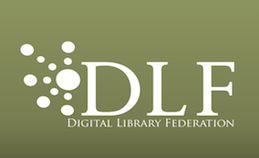Transcending Silos: Leveraging Linked Data and Open Image APIs for Collaborative Access to Digital Facsimiles
Session Type: Presentation/Panel
Session Description: Access to image-based resources is
fundamental to research,
scholarship and the transmission of cultural knowledge. Yet much of the
Internet’s scholarly image-base is locked up in silos, with access restricted
to bespoke Web applications that sit atop repositories of
idiosyncratically-modeled content.
In this panel session we will discuss an emerging framework which fosters collaborative efforts to present, interact with and annotate these image-based resources. Based on REST and Linked Data, the data model and APIs enable the cohesive presentation and collaborative annotation of distributed digital objects to scholars worldwide, using mix-and-match, best-of-breed software tools.
The Digital Manuscript Interoperability (DMS) initiative is a three-year old endeavor to create a coherent ecosystem of scholars, tools and repositories of digitized medieval manuscripts. The project enables a clear separation of concerns among hosting, developing tools for, and conducting research on manuscripts. The effort is enabling medievalists to apply analytic and visualization tools to content across a dozen-plus participating repositories.
The International Image Interoperability Framework (IIIF) extends this premise beyond manuscripts to any image-based content hosted by research and cultural heritage institutions. By converging on common API’s for image delivery, metadata and search, it is catalyzing the development of a new wave of interoperable image delivery software such as image viewers, page turners, and navigation systems, giving scholars an unprecedented level of consistent and rich access to image-based resources across participating repositories.
Shared Canvas is the data model underpinning both DMS and IIIF. It is based on the Open Annotation model, now the focus of a W3C Community. In it, an abstract “canvas” has image, text and multimedia resources painted on to it via Linked Data annotations. Using the same standards, researchers may also provide comments and scholarly discussion. OAI-ORE aggregations are used for collecting annotations, resources and canvases together into coherent compound objects.
Session Leaders:
Tom Cramer, Stanford University
Bejamin L Albritton, Stanford University
Robert Sanderson, LANL
Session Notes:
View the
community reporting Google Doc
for this session!
Session Slides:
